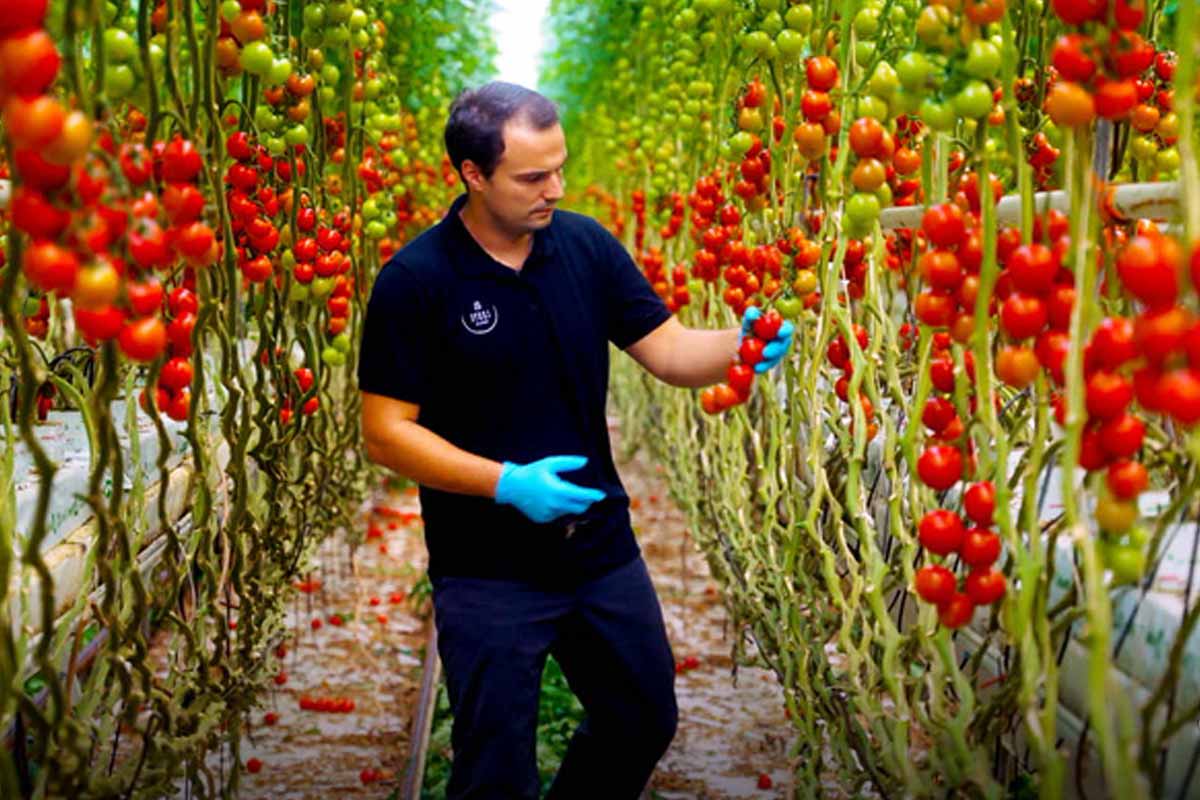A web of glass and light turned a compact country into a farming powerhouse. From tomatoes to peppers, Dutch growers squeeze record yields from tight land while trimming waste and risk. The secret runs through the greenhouse, where sensors, water loops, and careful hands turn precision into profit. Billions of pounds move year-round, shipped, packed cold carefully, and grown without waiting for seasons. As demand grows, the system scales without sprawl.
Why the greenhouse became the Dutch growth engine
The Netherlands is about the size of Maryland yet ranks second in farm exports by value, behind the US. Over half its land supports agriculture spanning eggs, beef, tomatoes, and peppers. Mild weather helps, but tomatoes fail outdoors year-round; industrial controlled environments fill the gap, concentrating production inside the greenhouse.
In Westland, one of the world’s densest clusters of glass structures pushes efficiency. Climate control, water recycling, and LED grow lights speed growth and protect quality. At night, efficient lamps mimic sunlight while using about half the power of high-pressure sodium, tinting horizons orange, purple, and green as production continues.
Looye Kwekers shows how height equals harvest. Vines climb strings from ceiling rails and stretch a foot each week. Workers ride scissor lifts, drop the strings by a foot, then coil tips onto guides. Computers manage light, water, and temperature, while pruning and picking stay manual because dense leaves confuse machines.
Industrial craft, step by step
Year-round tomatoes rely on precise routines. First comes trellising and climate control, then targeted irrigation and nutrient dosing. Computer dashboards orchestrate schedules; growers adjust after walking rows. Robots remain promising for harvest, yet today the sector carefully balances automation with skilled labor to protect taste and appearance inside each greenhouse.
Pollination runs on nature with a plan. Bumblebees live in boxes growers call “bee hotels,” about 800 per unit. They patrol blossoms and set fruit more consistently than tools. Staff track hive health and placement so each corridor has coverage, while ventilation patterns keep insects active and comfortable, said Stefan Lazar.
Once red and sweet, tomatoes cross to processing next door. Machines grade color and sugar cues; people handle packaging. Speed matters because fruit is picked ripe, not green. Teams have a 24-hour window to move trays into cold storage or to stores, protecting flavor and shrinking waste and cut losses.
Less water, more yield
Over two decades, Dutch systems cut water use by as much as 90 percent. Producing one kilogram of tomatoes now takes about four liters, compared with a global average above 200 liters. Condensate drains along each row, then flows to tanks where it is sanitized and returned to the circuit greenhouse.
The savings compound with hydroponics. Roots sit in inert media, receiving measured nutrients that recirculate rather than drain away. Because dosing stays exact, plants avoid stress and grow faster. The Netherlands yields roughly twelve times more tomatoes per area than the global average, turning limited land into a reliable, high-output engine.
Precision also trims inputs that never reach fruit. Drip emitters target roots; sensors watch humidity and EC in real time. When sun intensity shifts or clouds build, software adjusts irrigation and ventilation. Teams still walk aisles, since eyes catch subtle issues early, while data keeps the environment stable and predictable.
Peppers, pests, and silent robots
VD Holland raises red bell peppers hydroponically at scale, producing about 85 million units annually, said co-owner Arnaud van Dijk. Yellow sticky cards hang across aisles to snag intruders that slip indoors. Computers now read those cards quickly, so growers spot species fast and release friendly mites that eat pests in greenhouse.
Speed continues after harvest. Automated carts, in service since 2007, follow floor wires to carry crates toward packing lines. On the platform, AI cameras photograph each pepper and compare it to models of ideal shape, size, weight, and color. Approved fruit moves to packaging; the rest reroutes to the right market.
Workers remain central where touch still wins. Leaves hide fruit from many machines, so trained crews harvest by hand to protect stems and reduce bruising. The blend of algorithms and people keeps quality high while holding labor in check. It also builds resilience when conditions shift, as teams can adapt instantly.
Energy, costs, and the greenhouse transition
Running controlled environments demands energy. Some analyses suggest a tomato grown under glass can carry six times the carbon footprint of a field one. Until recently, many sites burned imported Russian gas; after the war in Ukraine disrupted supply, operators hunted alternatives that could keep heating stable and affordable to greenhouse.
One path goes underground. VD Holland and partners invested $46 million to tap geothermal heat, which now covers much demand and cut gas use by half. Combined with LED upgrades and tighter insulation, the move steadies operations during price spikes and helps maintain output reliably even on dark winter weeks.
Power shapes export strength. In 2024, the Netherlands sold over $140 billion in farm goods, while the US exported about $176 billion. High value stems from quality, consistency, timing, and reach. Ripe fruit packed within 24 hours retains taste; cold chains reduce losses. Nations pursue Dutch-style complexes to replicate these gains.
A forward look shaped by pragmatism and taste
Dutch farming shows how small countries scale output without sprawling fields. Because the greenhouse concentrates climate, water, and light, growers stretch yields while keeping flavor front and center. Bees hum, carts move, and sensors watch as power sources evolve. Markets reward consistency; the model spreads globally. It stays practical: data guides choices, people handle touch, and taste remains the standard. Suppliers and researchers share lessons to boost reliability and cut waste.
